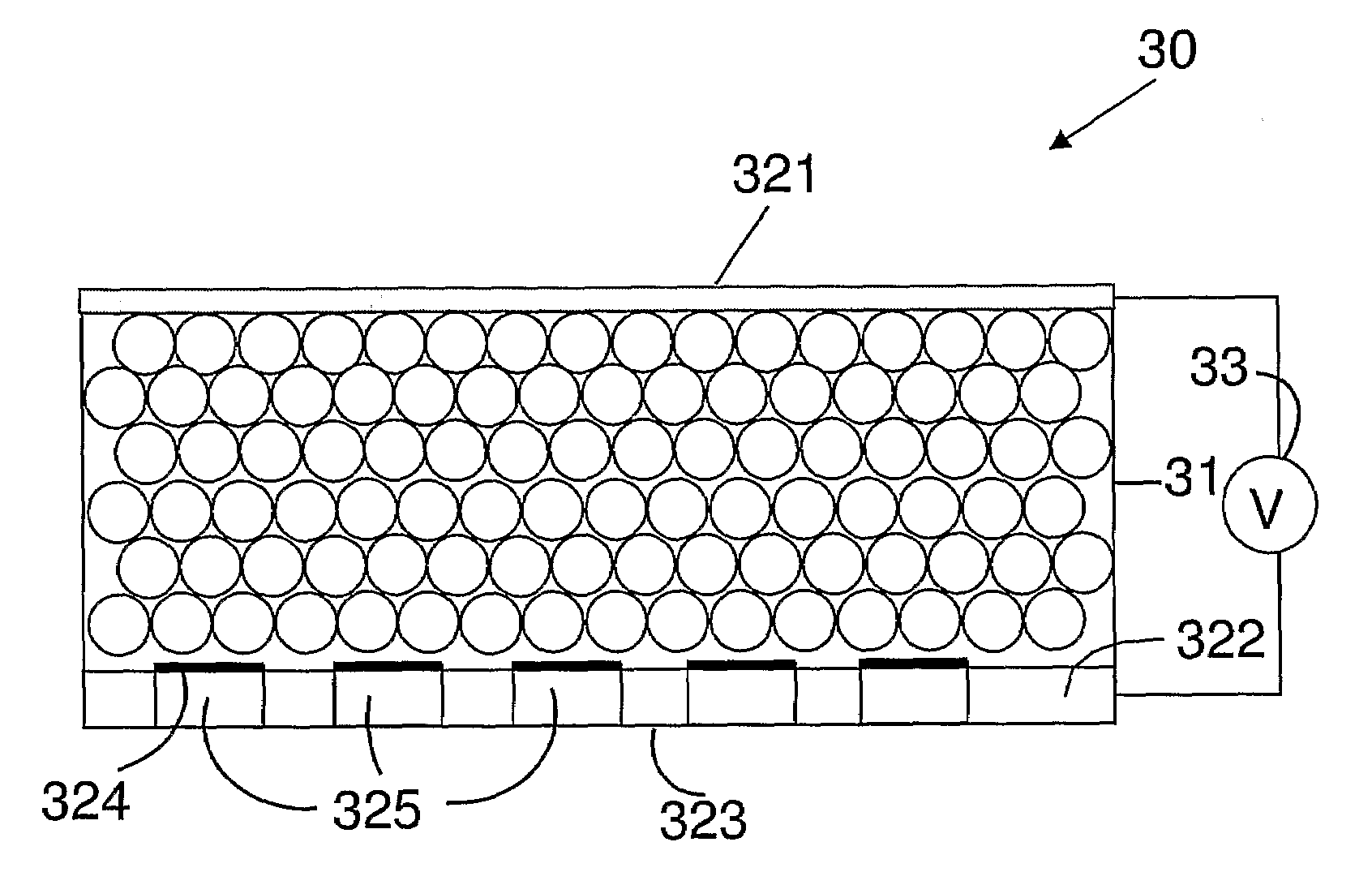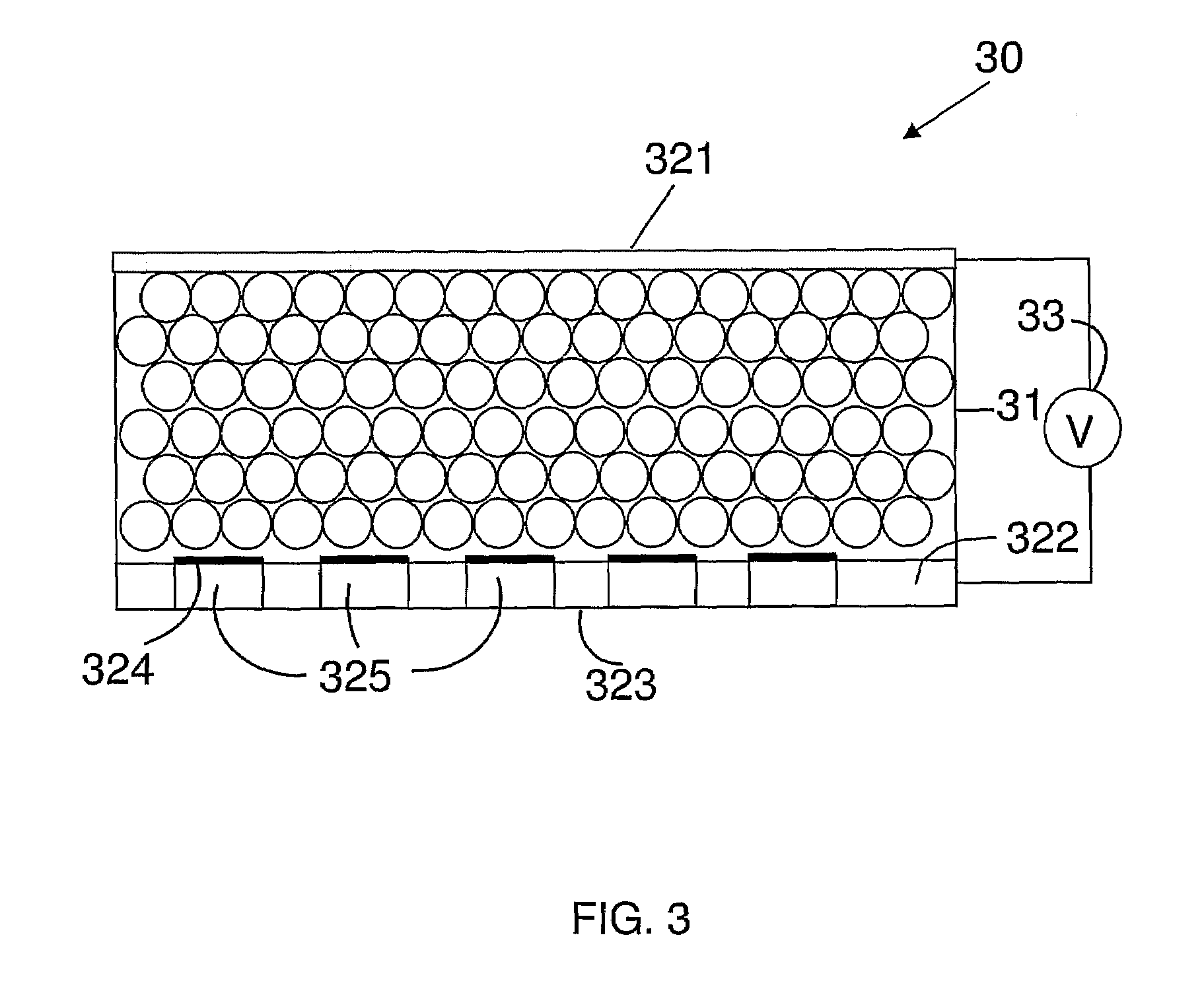Solid-state neutron and alpha particles detector and methods for manufacturing and use thereof
a detector and solid-state technology, applied in the direction of measurement with semiconductor devices, instruments, radioation controlled devices, etc., can solve the problems of difficult to distinguish background radiation from background radiation, limited cryogenic detectors, and difficult fabrication of boron-based semiconductors
- Summary
- Abstract
- Description
- Claims
- Application Information
AI Technical Summary
Benefits of technology
Problems solved by technology
Method used
Image
Examples
example 1
[0132]In order to synthesize boron phosphide (BP) material, PCl3 in the amount of 4 ml, NaBF4 in the amount of 5.3 g and metal Na in the amount of 7 g were placed in a stainless steel autoclave having capacity of 50 ml under protective atmosphere of N2. After sealing, the autoclave was heated at 400° C. for 6 hours and then cooled to room temperature. The precipitates were washed with absolute alcohol, HCl and distilled water, consequently, to remove the formed NaCl and NaF. Then the precipitates were dried in vacuum at 60° C., to yield black micro-grains of BP having mean dimension of about 1 micrometer size.
[0133]The formed grains of BP were mixed with polystyrene and toluene in the proportion of 80 wt % of BP and 20 wt % polystyrene and toluene to form a gelatinous paste. This paste was then glued with a Dr Blade coating method onto a C-MOS read out chip of 2 cm×2 cm containing 100×100 micrometer sized pixel electrodes with a pitch of 20 micrometers and a thickness of 100 μm, and...
example 2
[0134]For preparation of BP, first, a boron phosphide material was synthesized as in Example 1. Then, the micro-crystals were mixed with an inorganic Boron / Bismuth Oxide based glass. In order to prepare the glass binder, B2O3 and Bi2O3 powders were mixed in the molar ratio of 3:7 in a platinum crucible, and then subjected to temperature of 900° C. for one hour, and thereafter quenched in water. The powder is then wet pulverized in a ball mill or other grinding machine to grains having small size of about 10 micrometers, and then mixed with the BN micro-crystals in a medium of propyl alcohol in the absence of air or water humidity. Finally, the compound was pressed into a pellet and glued with Humiseal™ to a C-MOS chip, as described in Example 1.
example 3
[0135]Analytical-grade tertiary calcium phosphate (Ca3(PO4)2) and ammonium biborate hydrate (NH4HB4O7.3H2O) were selected as starting materials where calcium phosphate was used as a diluting agent to prevent the formation of bulk B2O3 during the thermolysis of biborate hydrate. In a typical experimental procedure, Ca3(PO4)2 powder in the amount of 10 g was dispersed into anhydrous ethanol (C2H5OH) in the amount of 400 mL, and then ball-milled for 8 hours to obtain Ca3(PO4)2 suspension.
[0136]Ammonium biborate saturated aqueous solution that contains 10 g of NH4HB4O7.3H2O was dripped into the vigorously stirred Ca3(PO4)2 anhydrous ethanol suspension at room temperature. Ammonium biborate hydrate was deposited on the surface of Ca3(PO4)2 particles owing to its insolubility in the anhydrous ethanol. After the separation from the mother solution, Ca3(PO4)2—NH4HB4O7 composites were washed by anhydrous ethanol and dried at room temperature.
[0137]Finally, NH4HB4O7 coated Ca3(O4)2 powder was...
PUM
 Login to View More
Login to View More Abstract
Description
Claims
Application Information
 Login to View More
Login to View More - R&D
- Intellectual Property
- Life Sciences
- Materials
- Tech Scout
- Unparalleled Data Quality
- Higher Quality Content
- 60% Fewer Hallucinations
Browse by: Latest US Patents, China's latest patents, Technical Efficacy Thesaurus, Application Domain, Technology Topic, Popular Technical Reports.
© 2025 PatSnap. All rights reserved.Legal|Privacy policy|Modern Slavery Act Transparency Statement|Sitemap|About US| Contact US: help@patsnap.com



